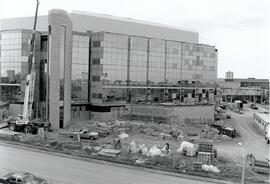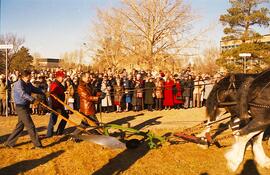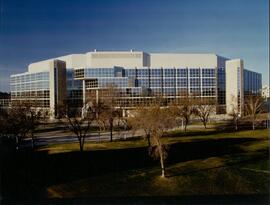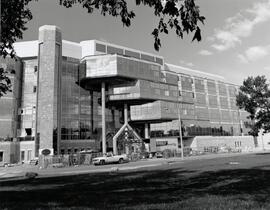College of Agriculture Building - Construction
- A-8277
- Pièce
- 1990
Fait partie de University of Saskatchewan Photograph Collection
Views of construction of Agriculture Building under construction.
Bio/Historical Note: Original plans for the Agriculture Building had it joining Kirk Hall, the John Mitchell Building and Crop Science, but the architects, Folstad-Friggstad, instructed to provide “a highly visible complex for the College,” proposed a stand-alone building intended to state the importance of the College of Agriculture to the University. It is the first major building on campus clad with glass rather than brick or stone. The original structure cost $91 million and was constructed between 1988-1991. It consisted of five floors, with 164 research labs, 38 teaching labs, 182 offices, 9 classrooms, 4 computer training facilities, 6 conference rooms, and 167 controlled environment plant growth facilities. In addition it has an impressive inner courtyard, the Atrium, and is home to the Kenderdine Gallery, named in honour of the University’s first art instructor. The structure had been designed to enable future expansion, and by 2000 a sixth floor was added at a construction cost of $10 million. The new addition was intended to house Animal and Poultry Science, Food Science, and Bioinsecticide Research.





